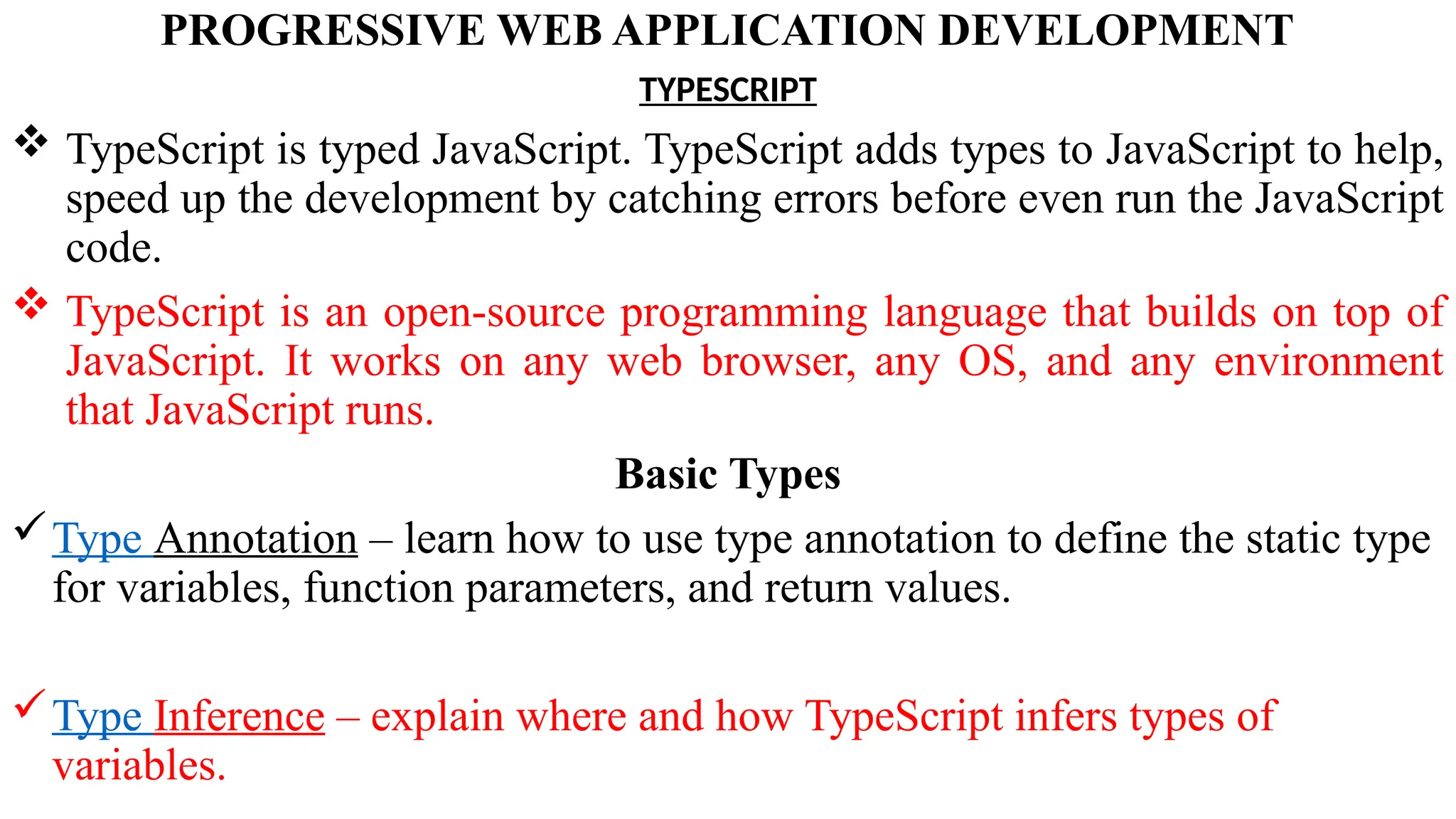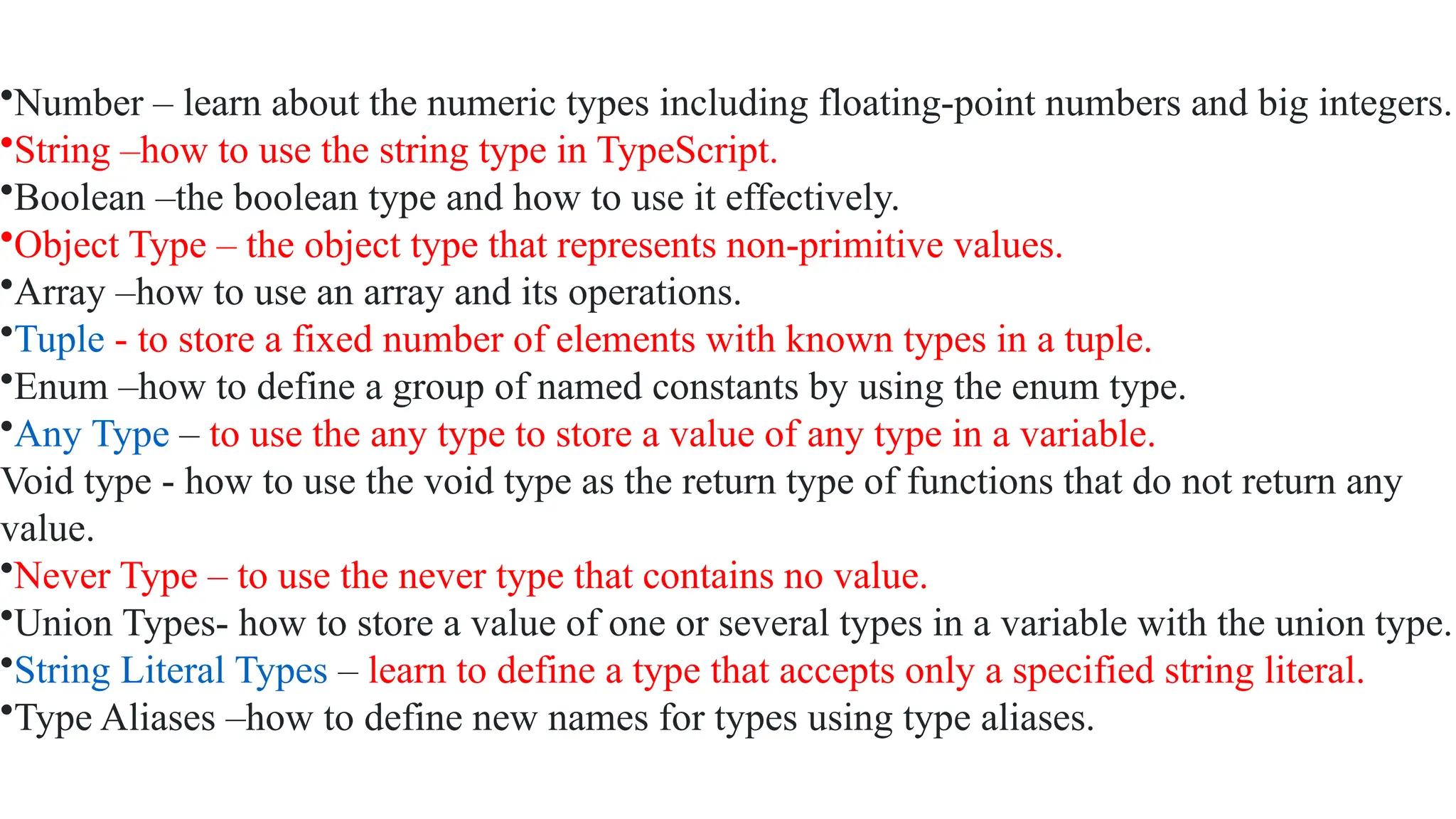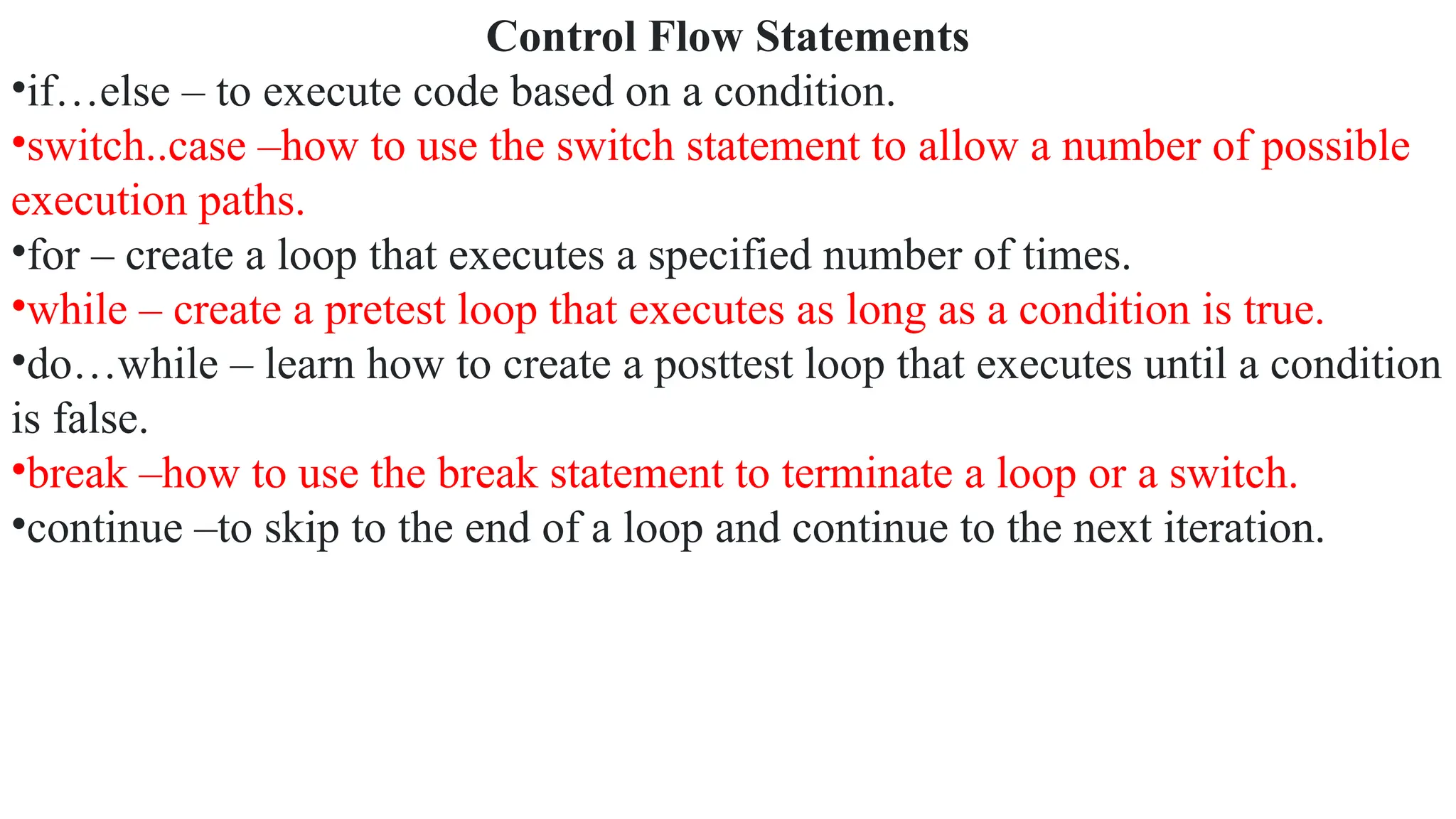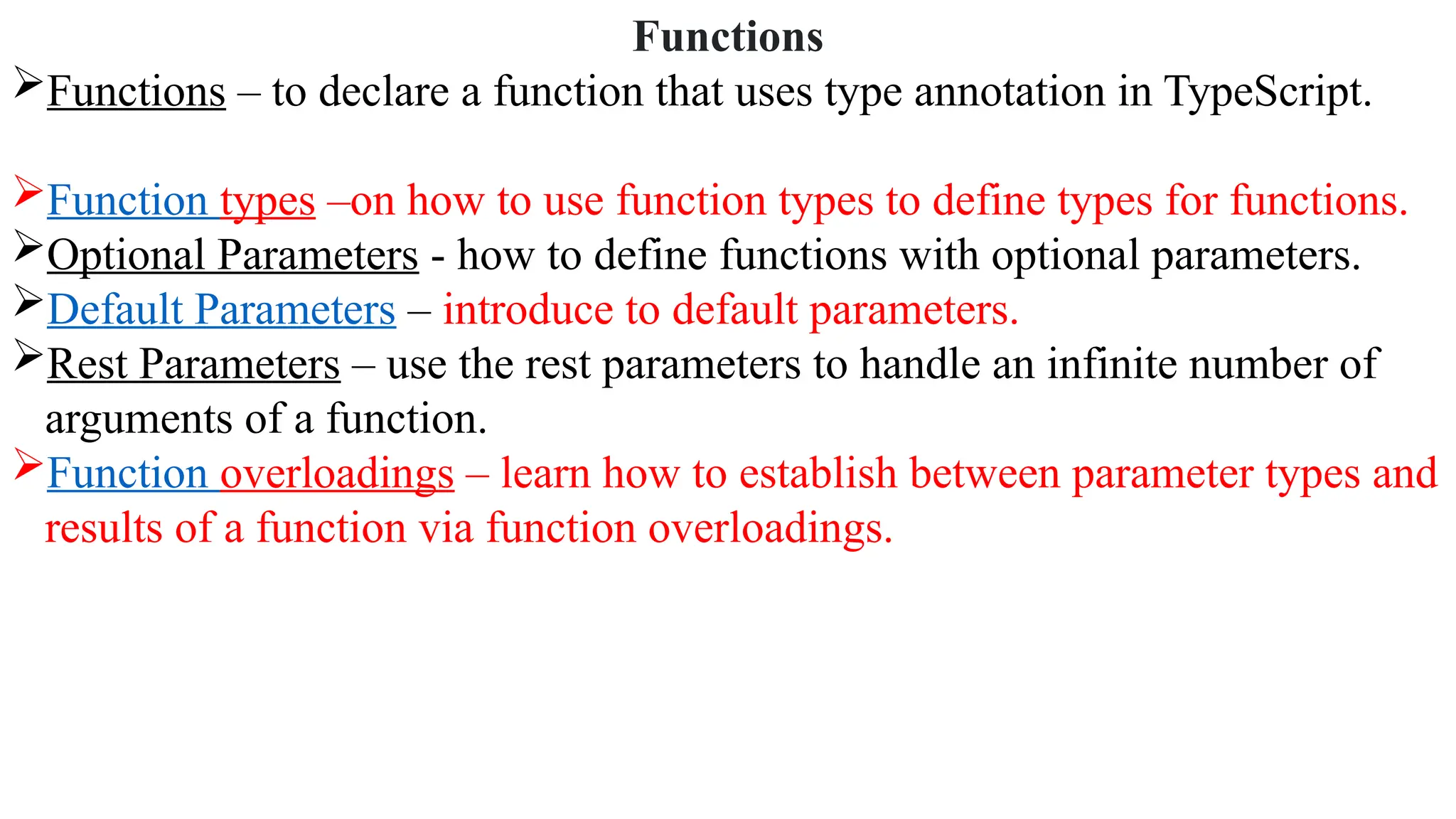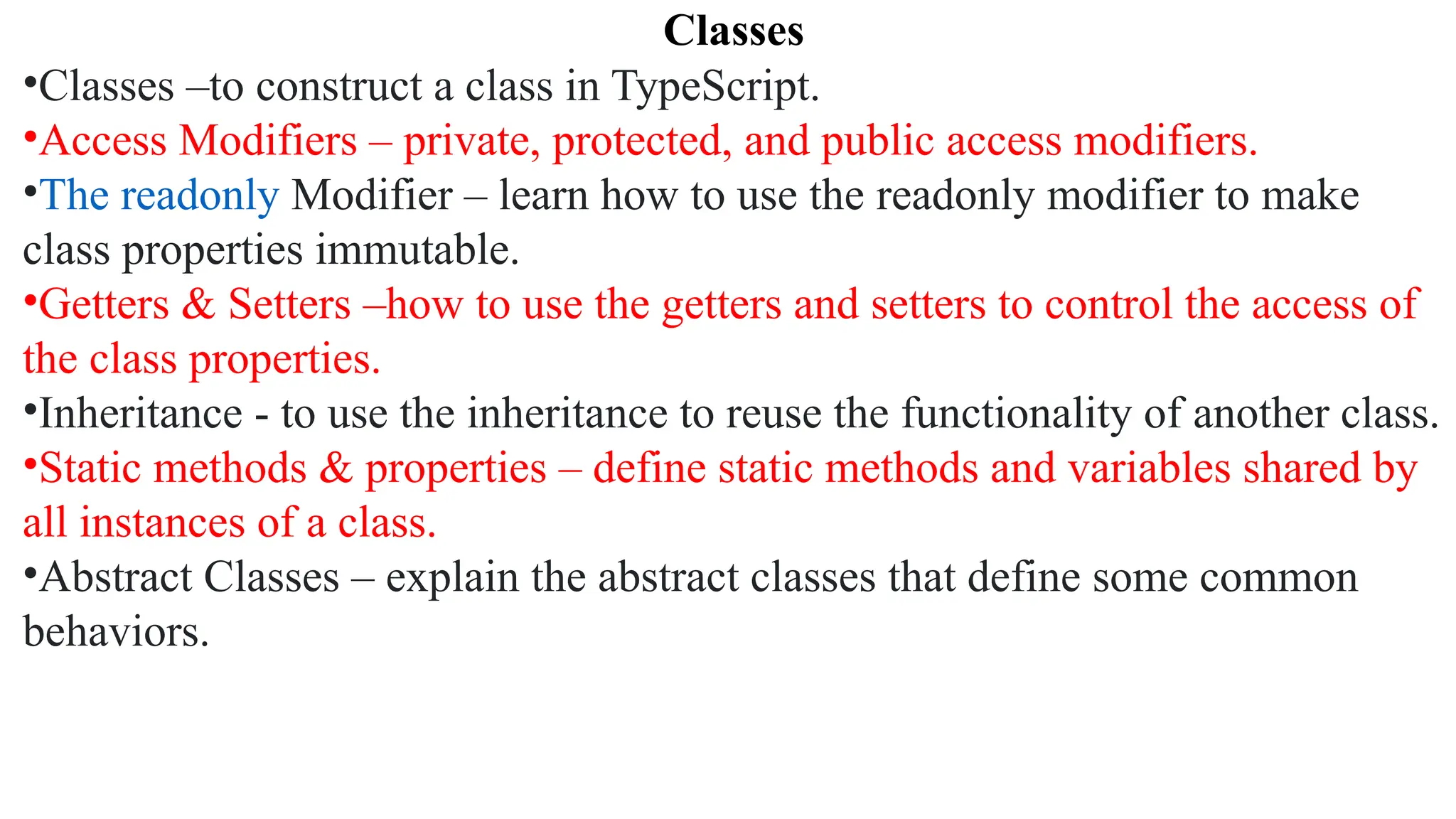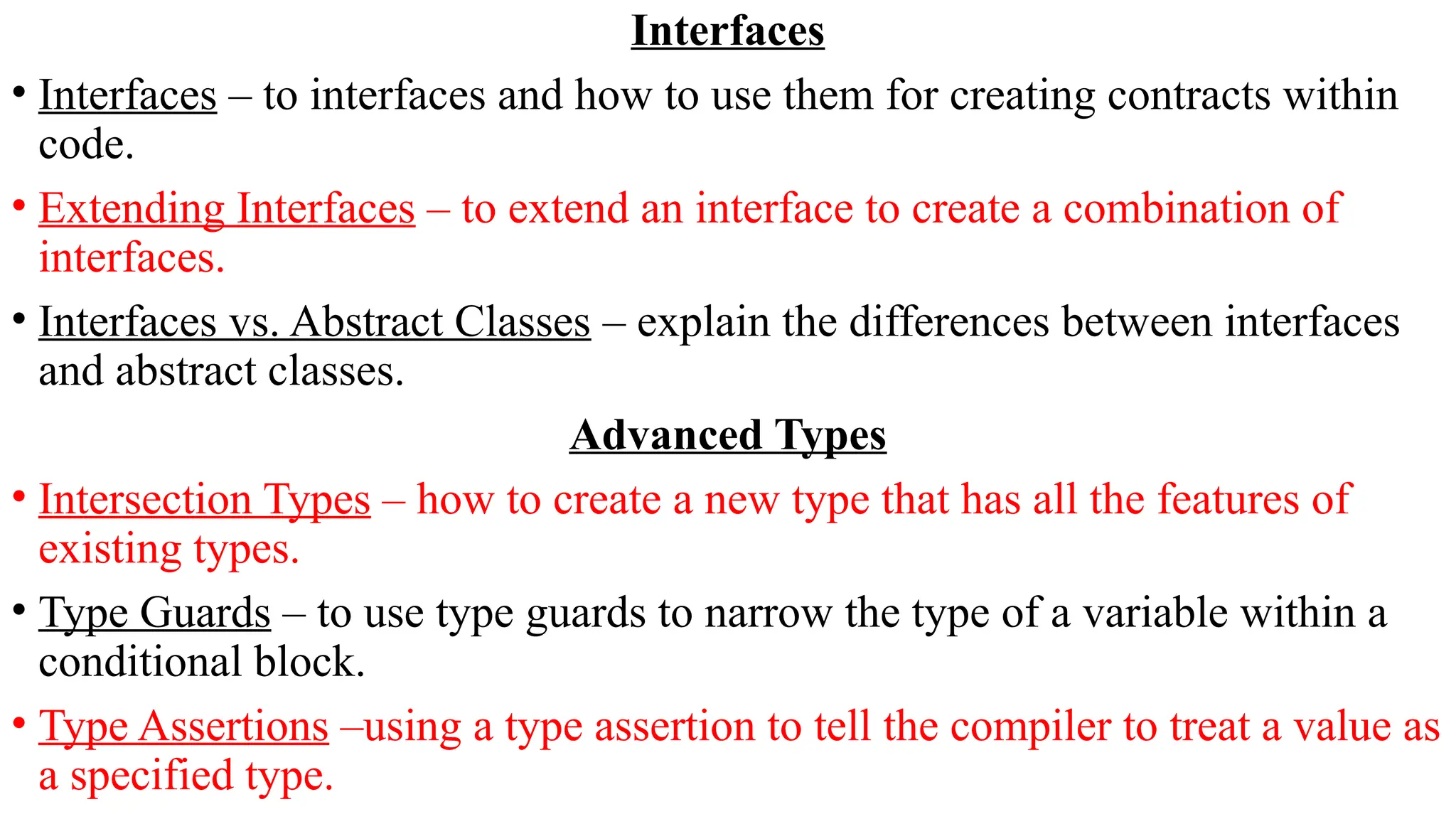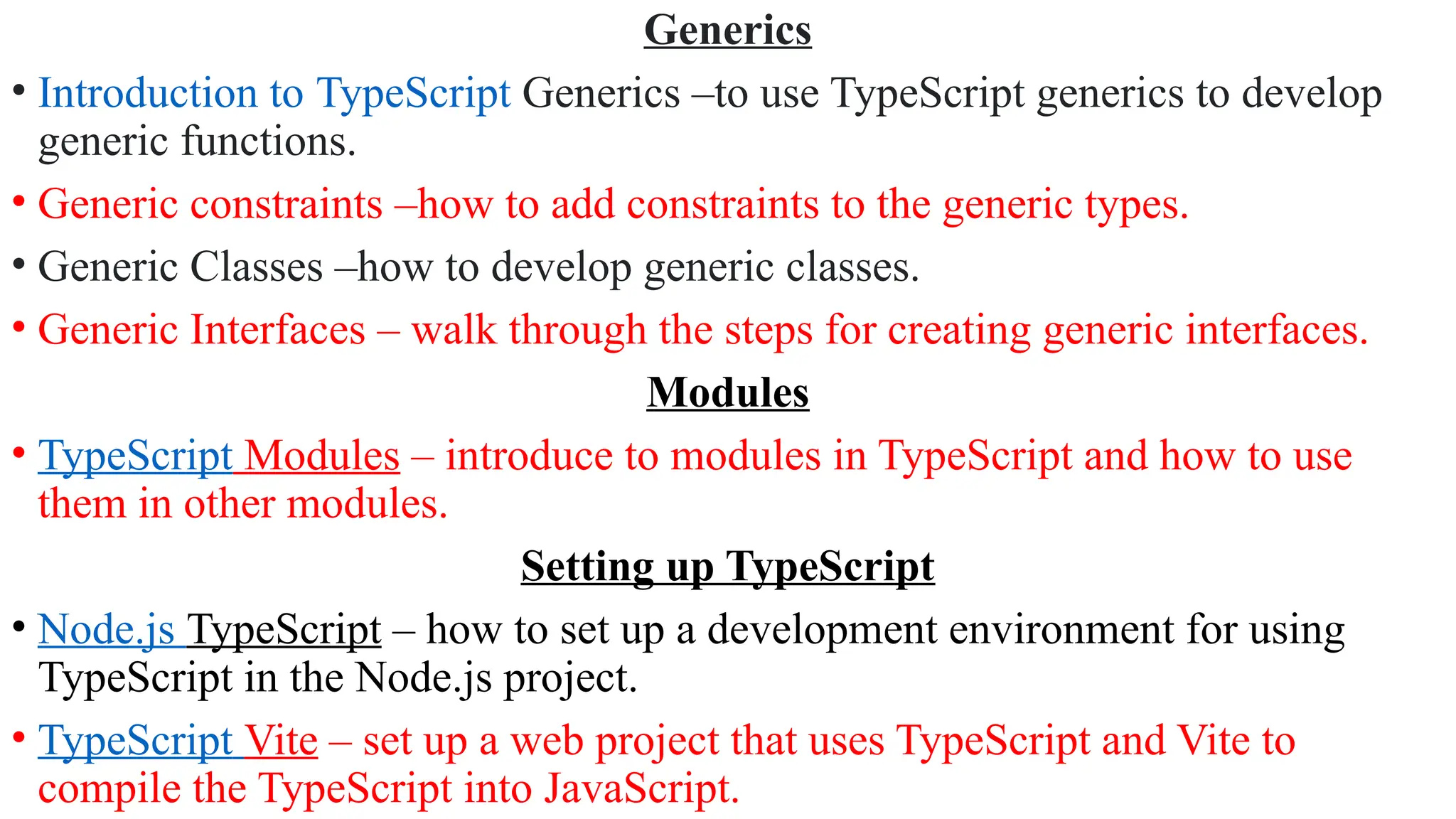This document provides an overview of TypeScript, a typed superset of JavaScript that enhances development by adding type annotations and catching errors early. It covers various aspects including basic types, control flow statements, functions, classes, interfaces, advanced types, generics, and modules, as well as setup instructions for using TypeScript with Node.js and Vite. The content is structured to guide developers through TypeScript's features and best practices.
